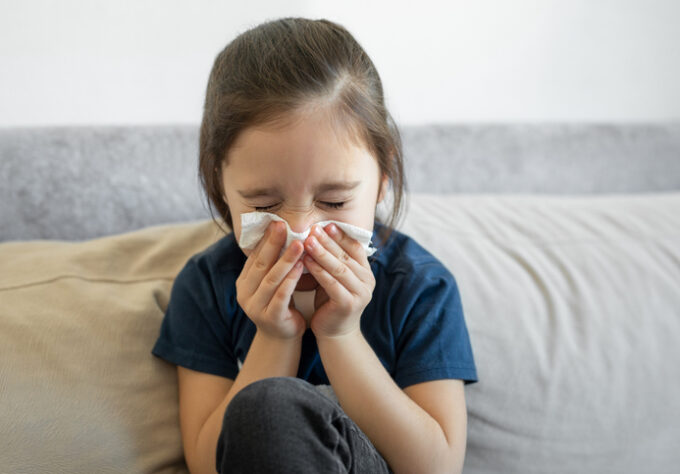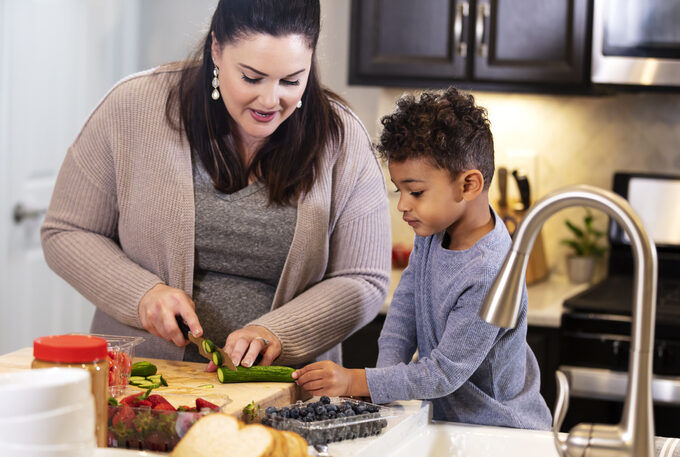All kids need time outside. It’s good for them to play and exercise, get fresh air, and spend a bit of time in the sun, so their bodies can make vitamin D, which helps all of us absorb calcium for strong and healthy bones. But too much sun exposure can be dangerous, especially to children. Damage from exposure to the sun builds up over time, so knowing about sun safety and how to protect your child from the sun should start early.
No Tan is a Healthy Tan
The sun’s ultraviolet (UV) rays can damage your skin in as little as 15 minutes. When your kids spend too much time exposed to UV rays without protection, they can also damage their eyes and immune systems. And just one blistering sunburn in childhood could double the risk of getting melanoma (the most serious skin cancer) later in life.
The intensity of the sun’s UV rays depends on many different factors. They’re strongest during midday, for people living or visiting close to the equator, during summer months and at high altitudes. Kids don’t have to be at the pool, beach or on vacation to get too much sun. Since they’re typically at school during midday hours, outside for recess or other activities, they have a greater risk. Remember that children need protection from UV rays whenever they’re outdoors.
There are lots of ways that kids can spend time outside having fun-in-the-sun, while also being sun-safe.
Tip 1. Block the Rays with Sunscreen
Every time your child goes outside, apply sunscreen. Each sunscreen is labeled with a sun protection factor (SPF), which rates how well it blocks UV rays. Higher numbers give more protection. Waterproof or water-resistant products are options that give a bit longer protection in the water or when sweating.
Sunscreens come in many forms, including ointments, creams, gels, lotions, wax sticks and sprays. Most work by absorbing, reflecting, or scattering sunlight. They contain chemicals that interact with the skin to protect it from UV rays. All products do not have the same ingredients; if your child’s skin reacts badly to one product, try another one or call a health care provider.
Everyone should use a broad spectrum sunscreen, which protects against UVA and UVB rays, with at least SPF 30. Be sure to check the expiration date as ingredients might go bad over time.
For the best protection, apply sunscreen generously 15-30 minutes before going outdoors, even on slightly cloudy or cool days. Shake well before use to mix bits that might be clumped up in the container. Be sure to apply enough. As a rule of thumb, use an ounce to cover your child’s entire body. Don’t forget to protect their ears, noses, lips (try a lip balm with broad-spectrum SPF 15-30), back of legs/knees and the tops of feet. Be careful when applying sunscreen around the eyes. A sunscreen stick can be helpful in this area.
Sunscreen wears off, so be sure to bring it with you to reapply during the day (every two hours), and especially after your child swims, sweats, or dries off with a towel. This is important even if your sunscreen is waterproof or water-resistant. If you are using a combination of insect repellent and sunscreen, make sure you apply sunscreen first.
Want to remain environmentally friendly while also keeping your kids sun safe? Use a biodegradable sunscreen. These products lack the ingredients that can damage coral reefs. Biodegradable sunscreens break down naturally in the environment, and are eco-friendly.
And keep in mind that sunscreen doesn’t allow kids to spend more time in the sun than they would otherwise.
Tip 2. Layer Up
The Centers for Disease Control and Prevention (CDC) recommend layering your children’s clothes to protect them from the sun. Long-sleeved shirts and long pants and skirts provide protection from UV rays. Clothes made from tightly woven fabric offer the best protection. Stay away from those wet t-shirts; dry ones provide much more UV protection. And darker colors can also offer more protection than lighter colors. Try to find clothing certified under international standards with information on its ultraviolet protection factor. Rash guards are another good option. They shield from UV rays, prevent rashes and chafing, and defend against sea particles that could bother your child’s skin.
Tip 3. Sunglasses for More than Looking Cool
UV rays can lead to cataracts later in life, so have your child wear sunglasses for protection. The best type wraps around their eyes, blocking as many UV rays as possible.
Tip 4. Hats On
Hats that shade your child’s face, scalp, ears and neck are easy to use and are great protection. Although baseball caps are popular with kids, they don’t protect their ears and neck, so if they choose that option, be sure to protect their exposed areas with sunscreen.
Tip 5. Have Access to Shade
Make sure children can seek shade under a tree, an umbrella or a pop-up tent when they are outside. These options are to prevent sunburn, not to seek relief after it’s happened. And remember that UV rays are strongest and most harmful at midday, so try to plan indoor activities during that time.
Tip 6. Check Medicine
Some medicines, especially antibiotics and acne medications, could make your child’s skin more sensitive to UV rays. Ask your health care provider or pharmacist if any prescription or over-the-counter medicines your kids take increase sun sensitivity. If so, take extra precautions. The best protection is covering up or staying indoors. Even sunscreen can’t always protect skin from sun sensitivity.
How to Treat a Sunburn
Despite your best efforts, your child may get a sunburn every now and then. The burn may not show up right away. Look for symptoms to begin about four hours after they’re exposed to the sun. The sunburn will likely worsen the next day, and usually fades in three to five days (this is when the skin will peel).
The signs that your child has a sunburn are:
- Red, warm, tender, or swollen skin
- Blistering
- Headache
- Fever
- Nausea
- Fatigue
To help your child relieve the symptoms of sunburn, try the following:
- Reduce pain, headache and swelling with acetaminophen or ibuprofen. Remember that children and adolescents should never take aspirin.
- Have your child drink plenty of water to keep hydrated.
- Gently apply cool, wet compresses to your child’s skin. This will lessen the heat and ease pain.
- Apply pure aloe vera gel to any sunburned areas of your child’s skin.
- Moisturizing cream will help rehydrate your child’s skin and also treat itching.
- If your child is over two-years old, during the first few days you can also apply a thin layer of 1% hydrocortisone cream to help with pain.
- Make sure your child does not go back into the sun until the burn has completely healed.
- If the skin blisters, lightly bandage the area to prevent infection. Do not break blisters. It slows healing and increases the chance of infection. If blisters break, you can apply antiseptic ointment.
- Note: Don’t use petroleum-based products. These can stop the heat and sweat from escaping the skin. Also avoid benzocaine, which may cause skin irritation or allergy.
See a health care provider if any of the following happens:
- Severe sunburn that covers more than a small area of the body
- Dehydration
- Fever above 101°F
- Extreme pain that lasts more than 48 hours
Learn More
Sunburn First Aid (Nemours KidsHealth.org)
Summer Safety (Nemours KidsHealth.org)



